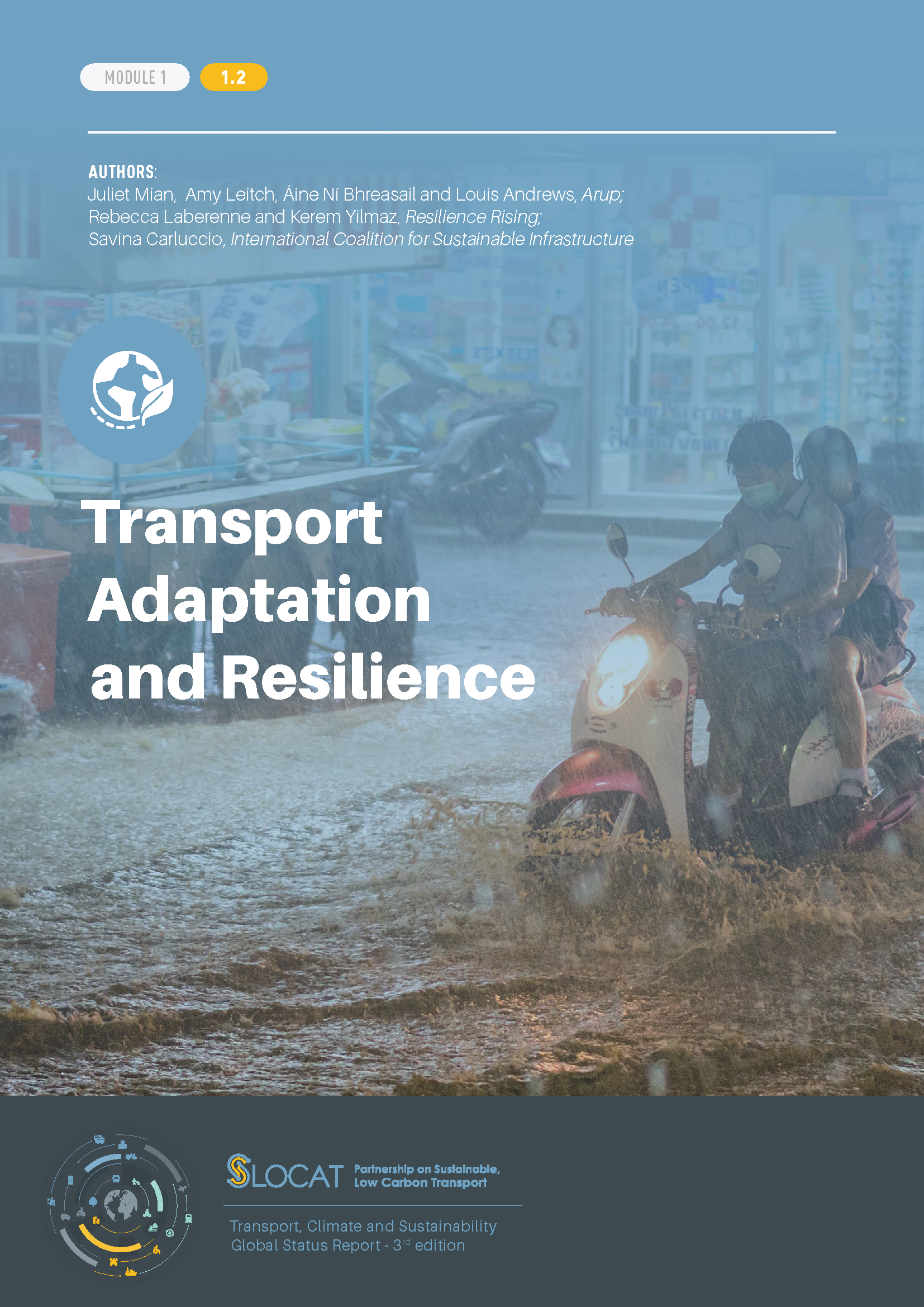-
Transport Adaptation and Resilience
- Key Findings
Context and key challenges
- Transport and mobility systems require not only infrastructure and operational resilience, but also resilience to shocks, macroeconomic and political disruptions, social events and climate change, to achieve financial sustainability.
- Climate change impacts – including sea-level rise and coastal flooding, more intense storms and rainfall, and more extreme temperature swings – increase the vulnerability of passenger and freight transport and heighten the impacts of other disruptors.
- Transport resilience initiatives are increasingly data dependent, but obstacles remain, including limited data collection capacity among many countries, cities, and companies, constrained access to existing data, and lack of information sharing.
- Transport systems tend to cross multiple jurisdictions, and resilience must involve non-traditional stakeholders, yet fragmentation of governance presents a continuing barrier.
- Resilience and adaptation must be balanced with the pressing need for decarbonisation and energy security, in the context of sustainability objectives.
Adaptation and resilience of transport systems
- Investment gaps continue to grow worldwide, and transport systems may become increasingly vulnerable as long-term stresses degrade assets.
- The monetary impacts of transport disruptions far exceed physical damages to assets. In low- and middle-income countries, this results in an estimated USD 107 billion in annual losses to businesses.
- Transport service interruption can bring harder-to-quantify, but no less impactful, secondary social consequences.
- Proactively adapting transport systems for future climatic conditions is far more cost-efficient than delayed adjustments or inaction.
- An “access-based” perspective on transport resilience can provide a more holistic, complex view of both the coming hazards and the available adaptation options.
Resilience through transport
- Transport is vital for supporting societal resilience during the response and recovery phases of a disaster and must be designed intentionally to serve these emergency functions.
- Transport increases people’s access to jobs, health services, shelter, education and economic opportunities. These factors highlight transport’s ability to deliver further “dividends of resilience”: increased economic resilience and benefits for development.
- Recognition is growing of the interaction between transport investments and social inequalities, which can lead to asymmetrical impacts from climate-related events.
- Emergent approaches offer opportunities to create transport systems that both are climate resilient and have a minimal, or even beneficial, impact on the environment.
- Shifting to active modes of mobility where feasible can help deliver a host of resilience, social and environmental benefits.
International support for transport adaptation and resilience
- A global shift in perspective is helping to create frameworks that support greater resilience in infrastructure at the international level, but few of these focus specifically on transport.
- A growing number of international tools are providing incentives for transport system resilience, but gaps in capacity remain, especially in the Global South.
- International financial institutions are highlighting climate risks in infrastructure, which is producing more resilient transport investments; yet the estimated gap in adaptation finance for developing countries is 5 to 10 times greater than current investment.
National and sub-national planning on transport adaptation and resilience
- National and sub-national actors – including governments, businesses and civil society – have begun to nominally address climate adaptation and resilience for transport, but concrete action and expenditures remain insufficient.
- National Adaptation Plans (NAPs) show promise as a means for low- and middle-income countries to prioritise actions around transport system adaptation.
- Provincial/state and municipal governments are planning and implementing transport resilience and adaptation projects with support from the private sector and civil society.
- Public-private partnerships are showing potential to mobilise private sector funding and expertise to make transport systems more resilient.
- National standards applicable to transport systems are starting to incorporate climate adaptation, building on the example of standards provided by the International Organization for Standardization (ISO).
Measuring impact – how do we know we are moving in the right direction?
- Measuring resilience and adaptation outcomes is an ongoing challenge that can be approached in multiple ways. Several methodologies have emerged that include appropriate indicators for measuring resilience and adaptation.
- Consideration of transport resilience and adaptation in combination with other critical systems offers a more robust way to ensure improved societal resilience.
Authors: Juliet Mian, Amy Leitch, Áine Ní Bhreasail and Louis Andrews, Arup; Rebecca Laberenne and Kerem Yilmaz, Resilience Rising; Savina Carluccio, International Coalition for Sustainable Infrastructure
Contributors: Mathieu Verougstraete, United Nations Office for Disaster Risk Reduction


